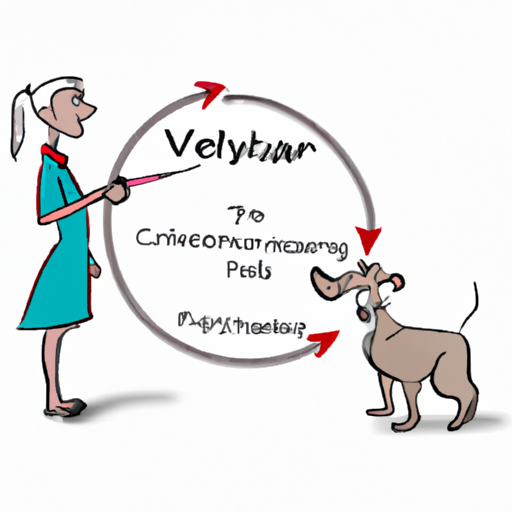Understanding Canine Reproductive Cycles
When you first bring a female puppy into your home, you might not immediately think of her reproductive cycle. However, as she grows, you’ll notice changes in her behavior that might leave you scratching your head. One of these changes is her going into estrus, commonly known as “heat”.
As a caregiver, you play a pivotal role in observing and managing this phase of your pet’s life. In dogs, the estrus cycle is a natural process that typically begins between six months and one year of age, depending on the breed and individual dog.
During the estrus phase, your dog is essentially fertile and capable of producing puppies. This period is characterized by a swollen vulva, bloody discharge, and behavioral changes. Understanding the estrus cycle can help you better care for your dog and prevent unwanted pregnancies.
Stages of the Canine Estrus Cycle
There are four key stages in the canine estrus cycle:
-
Proestrus: This is the beginning of the heat cycle. Your dog’s vulva will swell and she’ll start to have a bloody discharge. Despite this, she won’t be ready to mate just yet.
-
Estrus: This is when your dog is fertile and ready to mate. The discharge may change from bloody to a lighter, straw-like color.
-
Diestrus: This is the stage after mating. If your dog is pregnant, this phase will last until the puppies are born. If not, it’s a resting phase.
-
Anestrus: This is the period of sexual inactivity between cycles.
Recognizing Signs of Estrus
As an observant caregiver, you might notice several signs that indicate your dog is in estrus. Some common indicators include:
- Swelling of the vulva
- Vaginal discharge
- Increased urination
- Behavioral changes such as restlessness, clinginess, or aggression
Take note of these signs and the duration, as they can greatly aid your vet in diagnosing any issues or confirming a healthy cycle.
Managing Your Dog’s Estrus Cycle
When your dog is in heat, she can attract male dogs from miles around. Therefore, it’s essential to keep her securely confined during this time. Here are some tips:
- Keep her indoors or in a secure yard
- Avoid dog parks or public areas frequented by other dogs
- Consider using doggie diapers to manage the discharge
Remember, only breed your dog if you’re an experienced breeder. Otherwise, consider spaying her to prevent unwanted puppies and reduce the risk of certain health problems.
FAQ: Understanding Estrus in Dogs
Q: How long does the estrus phase last in dogs?
A: The estrus phase can last anywhere from 5 to 14 days, but this can vary between dogs.
Q: Can I have my dog spayed during her estrus cycle?
A: It’s generally recommended to wait until your dog is out of heat before spaying. It’s best to consult with your vet.
Q: How often do dogs go into heat?
A: Most dogs go into heat approximately every six months, but this can vary between breeds and individual dogs.
Q: How can I tell if my dog is in heat?
A: Signs can include a swollen vulva, vaginal discharge, increased urination, and behavioral changes.
Stay vigilant, stay caring. Your canine friend relies on your understanding for her well-being during this phase. Every tail wag is a thank you for your love and care.



